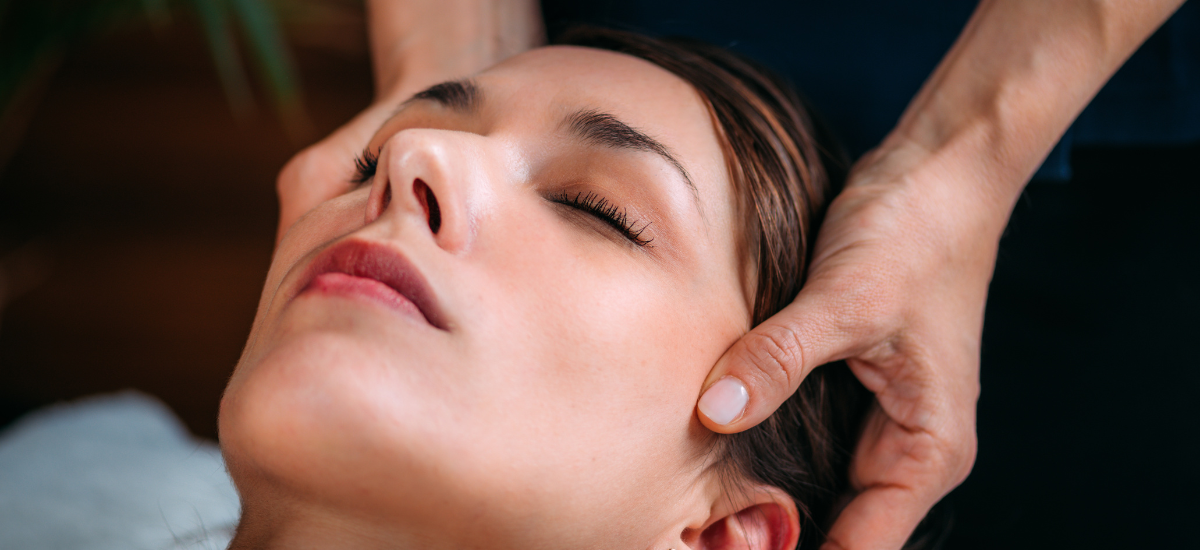Migraines can turn everyday life into a struggle. For some, they’re occasional. For others, they’re chronic and disruptive, causing missed work, sleepless nights, and ongoing stress. If you’ve been looking for a natural, hands-on therapy for migraine, you may want to consider Craniosacral Therapy (CST).
As a licensed physical therapist, I’ve worked with many patients who’ve found relief with CST for migraine—especially when other treatments didn’t do the trick. This article breaks down what CST is, how it may help with migraines, what to expect, and answers to the most frequently asked questions.
What Is Craniosacral Therapy?
Craniosacral Therapy (CST) is a gentle, hands-on treatment that focuses on the craniosacral system—this includes the bones of the skull, spine, and sacrum, along with the soft tissues and fluids that protect your brain and spinal cord.
Using light touch, a trained therapist helps release restrictions in the craniosacral system to promote better flow of cerebrospinal fluid and improve nervous system function. It’s a non-invasive approach that supports the body’s natural ability to heal and rebalance.
How Can Craniosacral Therapy Help with Migraines?
Migraines often have multiple triggers, including stress, poor posture, trauma, hormonal shifts, or nervous system imbalances. CST addresses several of these areas by:
1. Releasing Tension
Many migraines are linked to tight muscles or restricted movement in the head, neck, and upper back. CST gently releases these restrictions, allowing better mobility and blood flow.
2. Improving Fluid Movement
CST helps balance the flow of cerebrospinal fluid around the brain and spinal cord. Improved fluid dynamics may help ease pressure and reduce inflammation that could be contributing to migraine symptoms.
3. Balancing the Nervous System
CST encourages a deep state of relaxation, helping shift the body out of “fight or flight” mode and into a more balanced “rest and digest” state. This is key for people with migraines tied to stress or anxiety.
4. Supporting Long-Term Relief
Over time, regular CST sessions may help reduce the frequency and severity of migraines, especially when used as part of a broader treatment plan that may include physical therapy, nutrition, or stress management.

What Happens During a Craniosacral Therapy Session?
A CST session is very different from a typical massage or chiropractic adjustment. Here’s what you can expect:
- You’ll lie fully clothed on a treatment table in a quiet room.
- Your therapist will gently place their hands on different parts of your body—commonly the head, neck, back, and sacrum.
- The pressure used is extremely light—about the weight of a nickel.
- Most patients feel relaxed, and some even fall asleep during the session.
Sessions typically last 45 to 60 minutes, and many people report a sense of deep calm and reduced head pressure afterward.
Who Can Benefit from Craniosacral Therapy for Migraine?
Craniosacral Therapy is safe for most people, including children and older adults. You may especially benefit from CST for migraine if:
- You suffer from chronic or frequent migraines.
- You’re sensitive to medications or prefer a natural approach.
- You have a history of head or neck trauma.
- You experience migraines triggered by stress or posture.

How Many Sessions Are Needed?
This varies from person to person. Some feel better after just 1–2 sessions, while others may need several weeks of regular treatment. In many cases, CST becomes part of a long-term wellness plan, especially for managing chronic migraines.
FAQs About Craniosacral Therapy for Migraine
1. Is Craniosacral Therapy safe?
Yes. CST is gentle and non-invasive. It’s considered safe for all age groups, including infants and seniors. Always work with a licensed therapist who’s trained in CST.
2. How is CST different from massage or chiropractic care?
While massage works on muscles and chiropractic focuses on bones and joints, CST targets the membranes and fluids that support the central nervous system. The touch is much lighter and the focus is more on subtle rhythm and flow.
3. Can CST completely cure migraines?
CST isn’t a guaranteed cure, but many people experience significant improvements in their migraine symptoms. It’s best used as part of a comprehensive treatment plan.
4. Will I feel anything during the session?
Most people report feeling relaxed, warm, or even emotional as the body releases stored tension. Others may feel a sense of gentle movement or pulsing.
5. How do I find a qualified CST therapist?
Look for a therapist trained through organizations like the Upledger Institute or someone with experience using CST for migraine in a clinical setting. Ask if they are licensed in your state and experienced with neurological conditions.



